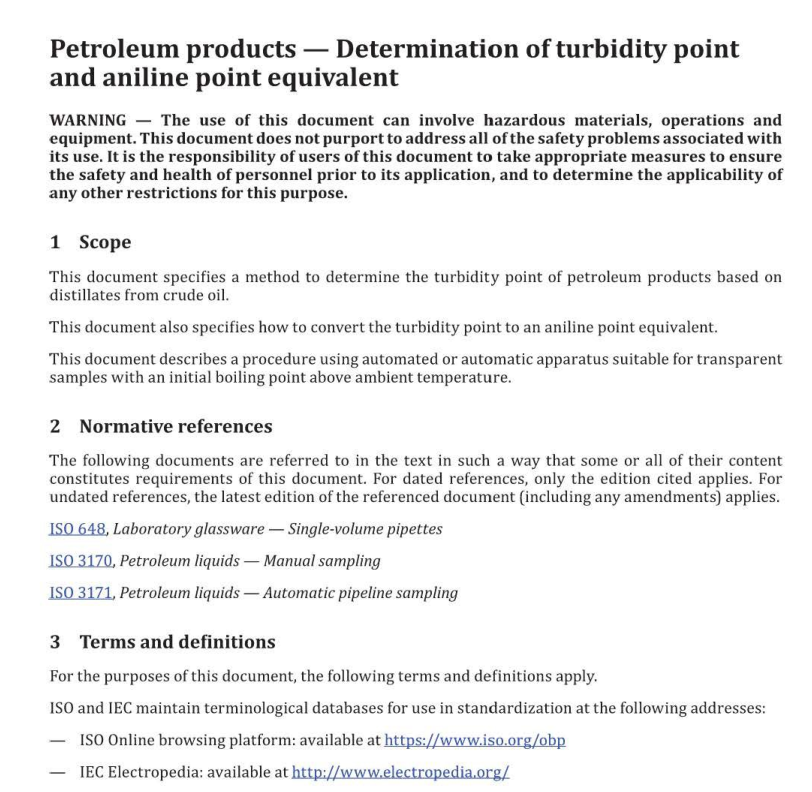ISO 21493 pdf download

ISO 21493 pdf download Petroleum products – Determination of turbidity point and aniline point equivalent
lf suspended water is visibly present, centrifuge the sample to remove the water before carrying outthe final drying with drying agent.
Remove any suspended drying agent by centrifuge or filtration.
Heat samples containing separated wax until they are homogenous and keep heated during thecentrifuging or filtration operations.
9Procedure
9.1 Clean and dry the apparatus.
9.2Pipette 10 ml± 0,02 ml of p-anisaldehyde (5.1) and 10 ml±0,02 ml of the sample into the test tube.lf the material is too viscous for pipetting, weigh to the nearest 0,01 g, a quantity of the samplecorresponding to 10 ml ±0,02 ml at room temperature.
9.3 Prepare the apparatus in accordance with the manufacturer’s instructions.
Use the expected temperature for the sample as guidance for setting up the apparatus. If the sample isunknown, perform an exploratory scan on the sample to determine the approximate turbidity point,and use that temperature for the immediate repeat analysis of the same material.
9.4 Stir the p-anisaldehyde-sample mixture rapidly, avoiding the inclusion of air bubbles and, ifnecessary, heating at a rate of 1 C/min to 3 C/min until complete miscibility is obtained by applyingheat directly to the jacket tube.
lf the p-anisaldehyde-sample mixture is completely miscible at room temperature, substitute a non-aqueous cooling bath for the heat source.
9.5 Allow the mixture to cool slowly at a rate of between 0,5 °C/min to 1 C/min, during continuousstirring, to a temperature 1 C to 2 C below the temperature at which turbidity first appearsaccording to 9.6.
9.6 Record as the turbidity point the temperature, to the nearest 0,1 °C, at which the mixture suddenlybecomes cloudy throughout.
NOTE1 This temperature, and not the temperature of the separation of small amounts of material, is theminimum equilibrium solution temperature.
NOTE2 The true turbidity point is characterized by a turbidity which increases sharply as thetemperature is lowered.
9.7 Repeat the observation of the turbidity point three times by heating and cooling of the same sample.
10 Evaluation and expression of results
lf the range of the three successive determinations does not exceed 0,5 °C,compute and report theaverage of the three determinations as the turbidity point, to the nearest 0,1°C.
If the range of the three successive determinations do exceed 0,5 C, investigate the equipment,reagent,and overall execution of the test method. Repeat the test after investigations.









